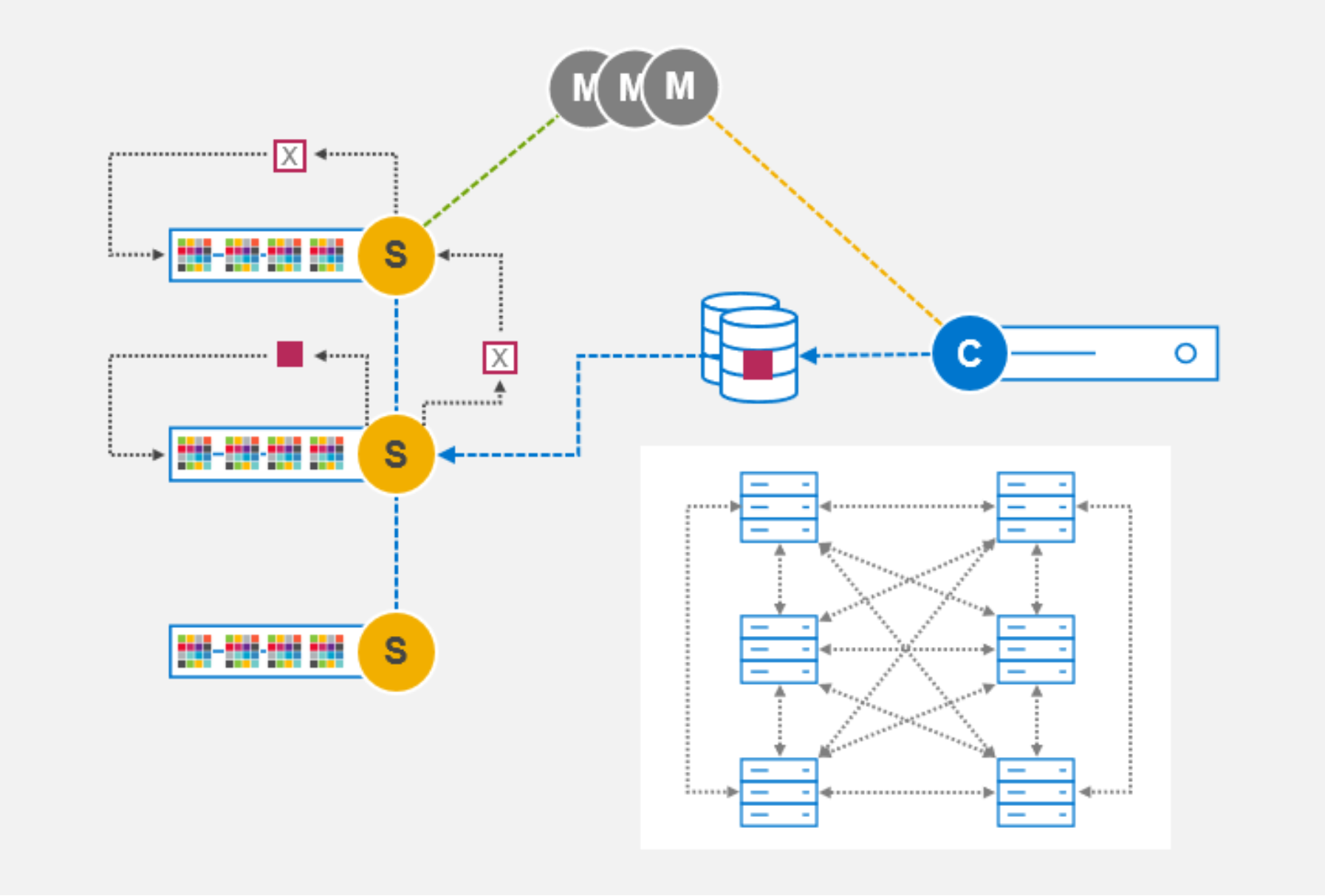Home > Storage > PowerFlex > White Papers > Dell PowerFlex: Introduction to Replication > Asynchronous replication overview
Asynchronous replication overview
-
To understand how replication works, we must first consider the basic PowerFlex architecture.

Figure 2. PowerFlex basic components and architecture
The following base elements are the foundation of PowerFlex software-defined storage, a platform that scales linearly to hundreds of SDS nodes:
- Storage Data Server (SDS)—Servers contributing media to a storage cluster run the SDS software. The SDS allows PowerFlex to aggregate the media while sharing these resources as one or more unified pools on which logical volumes are created.
- Storage Data Client (SDC)—Servers consuming storage run the SDC, which provides access to the logical volumes using the host SCSI layer. PowerFlex does not use the iSCSI protocol; instead, it uses a resilient load-managing, load-balancing network service that runs on TCP/IP storage networks.
- Meta Data Manager (MDM)—The MDM controls the flow of data through the system but is not in the data path. The MDM maintains information about volume distribution across the SDS cluster. It distributes the mapping to the SDC, informing it of where to place and retrieve data for each part of the address space.
When considering architectural options for replication, maintaining the scalability and resiliency of PowerFlex is critical. The replication architecture in PowerFlex is a natural extension to the core elements.

Figure 3. PowerFlex simplified replication architecture
PowerFlex version 3.5 introduced a new storage software component called the Storage Data Replicator (SDR). Figure 3 depicts where the SDR (light blue “R” icon) fits into the overall PowerFlex replication architecture. Its role is to proxy the I/O of replicated volumes between the SDC and the SDSs where data is ultimately stored. Write I/O operations are split, sending one copy on to the destination SDSs and another copy to a replication journal volume.
Sitting between the SDS and SDC, from the SDS point-of-view, the SDR appears as if it were an SDC sending writes. From a networking perspective, however, the SDR-to-SDS traffic is still back-end storage traffic. Conversely, to the SDC, the SDR appears as if it were an SDS to which writes can be sent.
The SDR mediates the flow of traffic for replicated volumes only. Nonreplicated volume I/O operations flow, as usual, directly between SDCs and SDSs. As always, the MDM instructs each SDC where to read and write its data. The volume address space mapping, presented to the SDC by the MDM, determines where the volume’s data is sent. But the SDC is ignorant of the write-destination as an SDS or an SDR. The SDC is not aware of replication.
